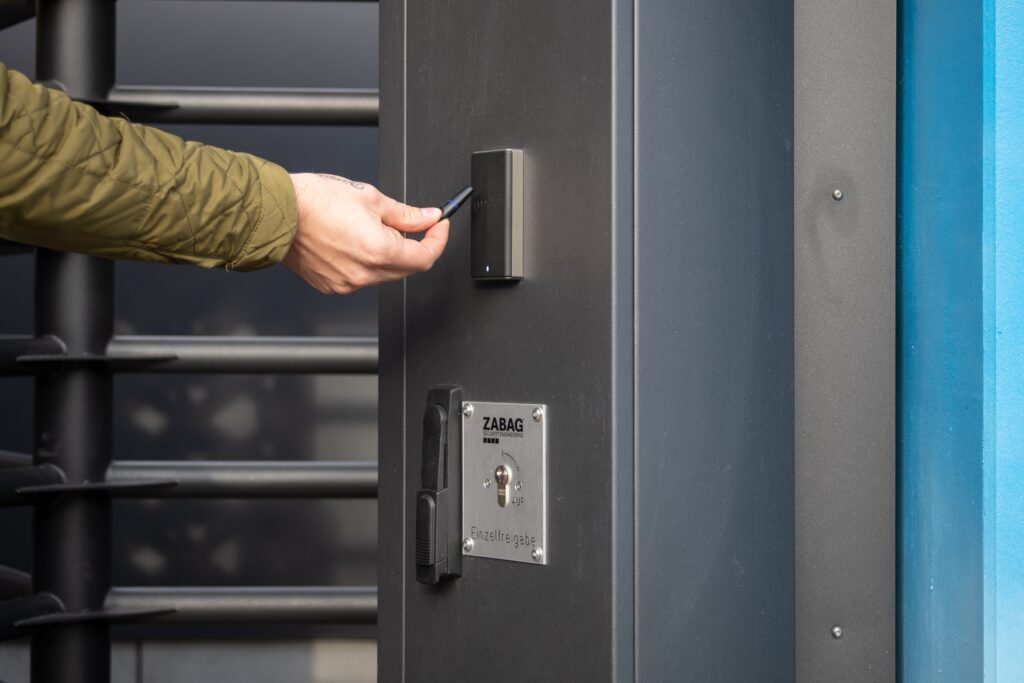
The Pears Jewish Campus is an education and cultural complex that spans over 80,000 square feet and has seven storeys. It is located on Westfälische Strasse in Berlin, Germany. The building was designed by the esteemed architectural firm Tchoban Voss and constructed over a period of five years. The project cost €43.7 million and was funded by several private donations, the German Federal Government, and the Pears Foundation based in the UK.
Europe’s largest Jewish campus includes a kindergarten, primary and secondary school, a cinema, sports and events halls, art and music studios, co-working office spaces and a kosher restaurant.
Paxton’s latest system Paxton10 has been installed to secure the building with sophisticated access control, remote-site management, and flexible access permissions.
Ensuring the safety and protection of young students, teachers and professionals working on campus is of utmost importance, especially given the recent anti-Semitic incidents. As a result, a comprehensive security concept has been developed, which includes enhanced capabilities such as full-lockdown functionality and checkpoints with weapon detection.
Peter Gräf, the MD of GRAEF Systemtechnik GmbH, was contracted to oversee the new security system installation. GRAEF specialises in securing high-traffic public sector buildings.
Gräf established that this was a project far beyond the normal requirements. He explains, “Every security measure on the campus had to be designed to recognise and ward off potential threats at an early stage and create a safe yet welcoming environment.
“The system also needs the ability to convert into manual operation and shut down all electronic keypads from sunset on Fridays to sunset on Saturdays for Shabbat, the Jewish day of rest.”
For ease of use, the campus managers need web-based remote site management software and a straightforward way to connect across multiple buildings in various locations.
Gräf continues, “It is a large site and running cables across it would be a challenge. Having a system that links wirelessly is the simplest and most cost-effective solution.

All these requirements coincide with the fact that the system needs long-term scalability, and the design of the hardware used had to meet the expectations of award-winning German architect and artist Sergei Tchoban, who designed the building.
“Additionally, there are many people requiring varying levels of access permissions throughout the week. Therefore, it is especially important to be able to implement simple measures to allow access to certain areas at certain times by using electronic tokens that can be issued remotely.”
Paxton 10 solution
Gräf suggested using Paxton10 for the campus’ security needs, due to its multi-site functionality, flexible software configuration, and cloud technology. Paxton10 is easy to specify and install, as it combines access control and video management on one platform without requiring a VPN.
“The modern software is extremely customisable with easily programable rules and can manage multiple sites remotely with the web software or the Paxton Connect app. Also, the mix of storing data on premises and in the cloud made it ideal for this high-security project.”
Paxton10 has been installed on 20 main doors across the campus and on turnstiles that form weapon detecting checkpoints. The system has also been integrated with anti-terror software that locks down the site, meaning no one can enter or leave once initiated.
The current set-up leaves the building managers with plenty of room to scale the system up, as Paxton10 can manage 1,000 doors, and 50,000 users from a single Paxton10 server.
PaxLock wireless door handles have been installed on office doors and employee wellbeing areas. Authorised users can gain access with traditional fobs or more modern smart credentials which are sent through the Paxton10 software to an end-user’s smart device, and work within the free Paxton Key app.
Peter continues: “Smart credentials are ideal for the vast number of students on campus. They like using their smartphones, and it means they are not losing tokens that are expensive to replace.
“However, having the choice to still gain access with traditional fobs has been useful as there are a substantial number of people with varying technological preferences.”
Mission accomplished
The installation has met the advanced security requirements mapped out in the original concept, and the system can turn into manual operation at the touch of a button for ease of use when Shabbat is being recognised.
Overall, the building managers are pleased with the system’s functionality and have been working with Paxton’s Support team configuring Paxton10 to suit the bespoke needs of the campus.
Furthermore, the hardware installed has met architectural expectations and compliments the buildings heterogenous design, particularly on the main entrances where Paxton’s vandal-resistant panels and readers have been installed.
Gräf concludes, “The system has been configured so the campus managers can make changes at the touch of a button, and the Paxton10 hardware is excellent quality and extremely ascetically pleasing.
“I believe Paxton10 is the future of access control.”

